Igniting Creative Futures

Ron Dearing UTC’s STEAM Studios has been transformed from a 1920s fire station into a centre for creative learning. This project renews a vacant heritage asset, reworking it into light-filled studios and flexible spaces that will spark new ideas and inspire the next generation of learners.
Overview
Located within Hull’s Georgian New Town Conservation Area, the former fire station was built in 1927 to replace a grander predecessor that once dominated the corner site. Its proximity to the theatre reflected a time when fires during performances were frequent, and the building bears scars from bombing and fire damage during the Second World War. After the fire brigade moved out in 2016, the building stood empty as Ron Dearing UTC and the neighbouring theatre expanded. SPACE Architects were appointed to guide the building’s rebirth from early concepts and heritage statements through to detailed design and collaboration with planners. The project continues the practice’s commitment to creative re‑use: adapting dormant structures with inventive solutions to bring them back into productive life.
- Year 2023
- Location Hull
- Client Ron Dearing UTC
- Project Sectors Culture & Heritage

Design Approach
The design began by peeling back unsympathetic modern additions to reveal the building’s historic fabric. The ground‑floor appliance hall, once filled with fire engines, remains a generous volume; within it, new pods carve out teaching spaces while preserving the rhythm of the original bays. Roller‑shutter doors were replaced with glazed curtain walling that echoes the format of the 1920s doors.
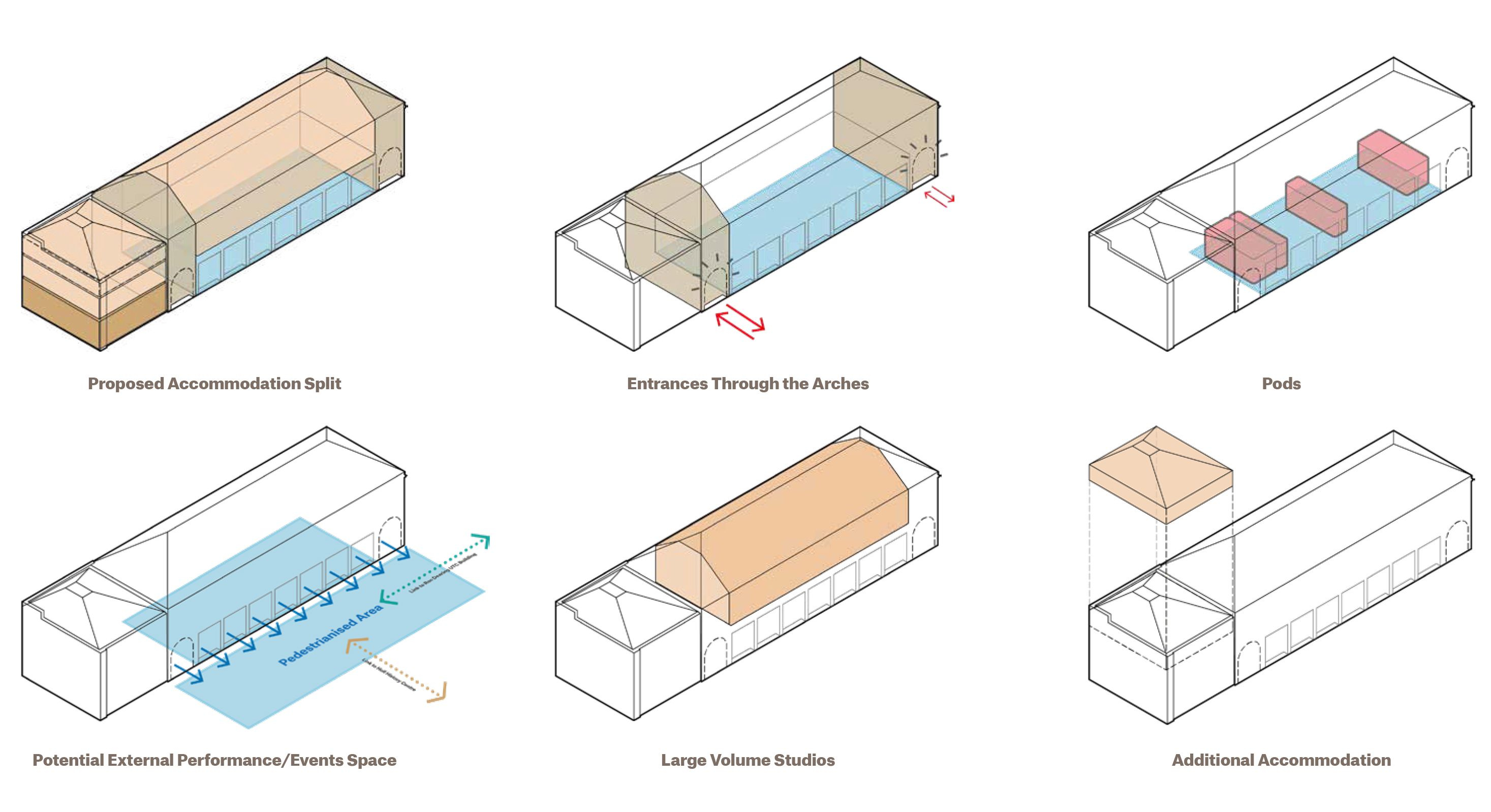
One of the bricked‑up arched openings was reopened and reinterpreted as the new main entrance. This threshold leads to a boldly contemporary stair carved into the heart of the building; its clean lines set off the restored glazed brickwork uncovered during the refurbishment. The stair connects all levels and aids wayfinding, while a new lift provides seamless accessibility. On the first floor, another pod houses ancillary accommodation for the creative suites.


Removing the lay‑in grid ceiling exposes the original steel trusses and increases the sense of volume; acoustic treatment to the underside of the roof keeps teaching spaces comfortable. A second‑floor extension tucked behind a brick parapet provides additional teaching space.
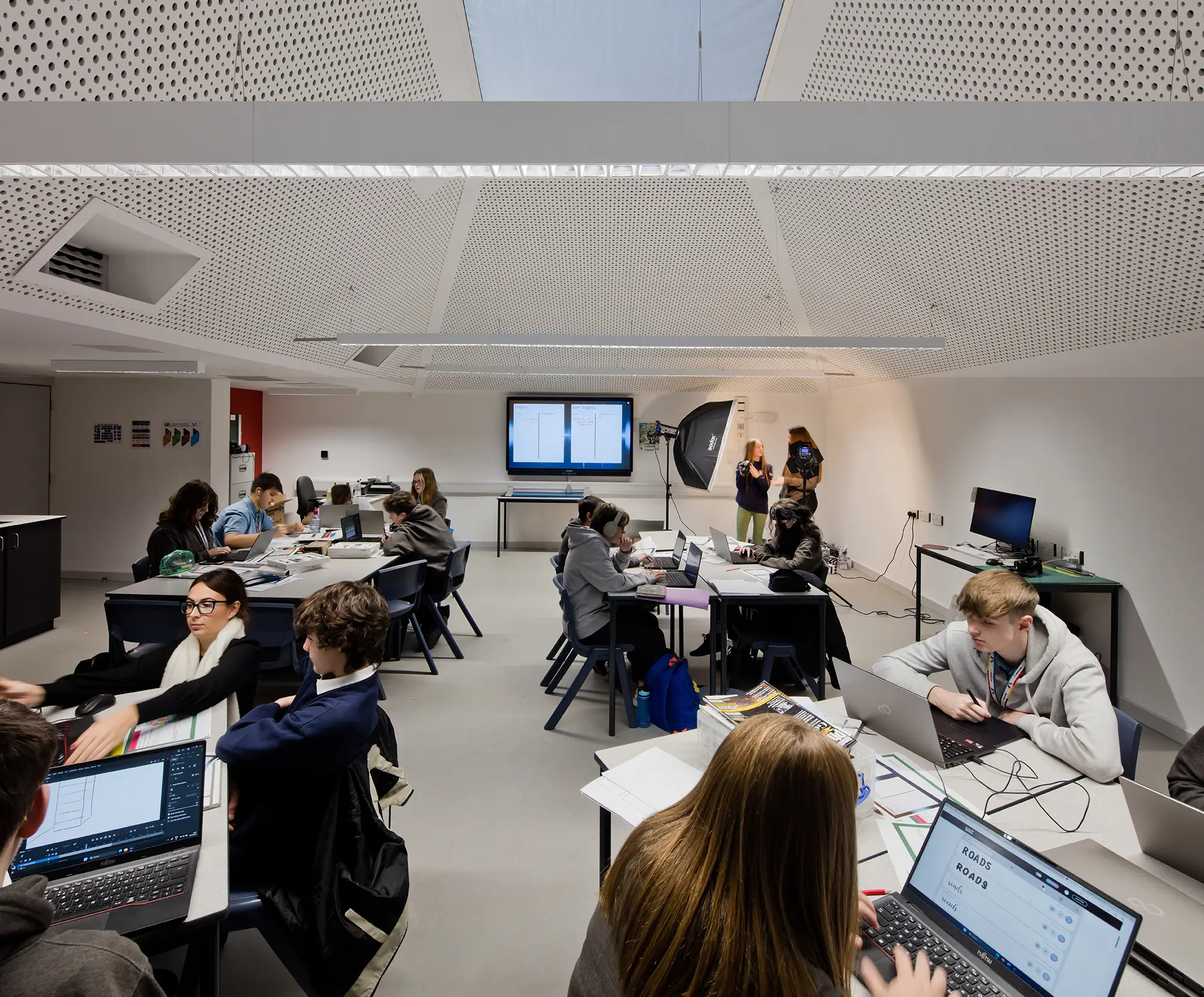
Its standing‑seam zinc‑coated aluminium cladding and generous roof light clearly signal a contemporary intervention while harmonising with neighbouring buildings. Across the project, the material palette is intentionally restrained: raft ceilings, muted flooring, dark‑coloured pods and extensive glazed partitions. Where historic and new steelwork meet, a flash of vibrant red celebrates the dialogue between past and present.



Result
The completed STEAM Studios give Ron Dearing UTC flexible spaces for science, technology, engineering, arts and mathematics. The adapted fire station brings light, air and usability to a previously vacant structure, creating an environment that supports the college’s growth. Clear organisation and accessible circulation aid orientation and encourage collaboration between disciplines. The project demonstrates how a heritage building can be revitalised to meet modern educational needs while retaining its character.
People
A setting designed for collective imaginationDesigned to nurture experimentation and the exchange of ideas, the building provides students with spaces that support both technical and artistic learning. Studios, workshops and exhibition areas encourage cross-disciplinary projects, while the public gallery space invites artists and makers from outside the college to share their work and experience with the next generation. The result is a lively and inclusive environment that celebrates the value of the arts within education and the wider community.
“SPACE were really good listeners and were able to provide innovative solutions to our requirements. From the inception to the completion of the project, they liaised extremely well with the contracting team and other consultants, as well as our staff and students. They were receptive to our ideas but also comfortable with challenging our thinking and suggesting alternative approaches to deliver on the brief.”
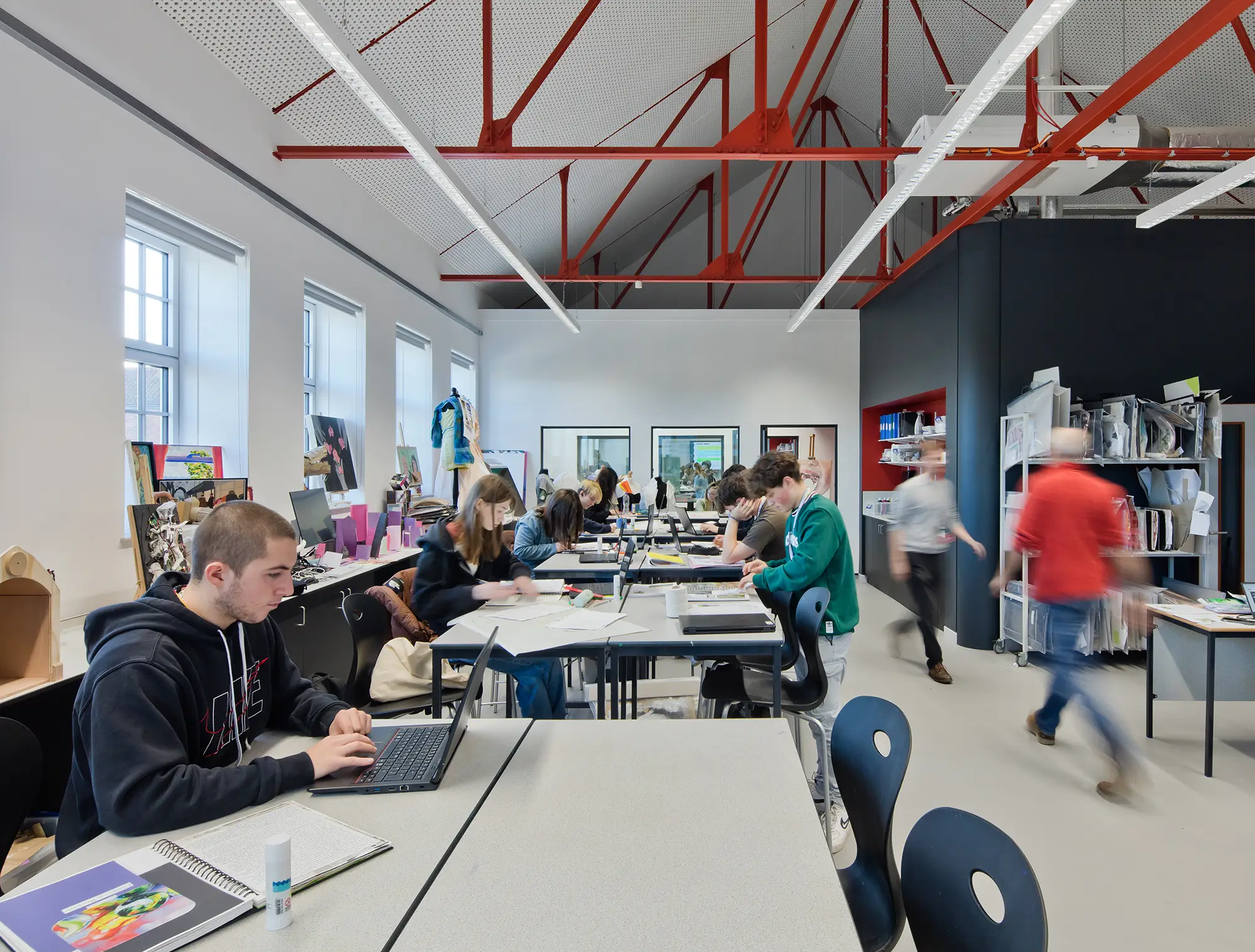
“The way SPACE presented their designs, using the concept diagrams, 3D visuals and walkthroughs, was very accessible and easy to comprehend and enabled everyone on the project to visualise the finished building.”
Sarah Pashley
Principle
Ron Dearing UTC
Planet
Delivering resilient spaces with a lighter carbon footprintRefurbishing the existing fire station rather than building anew significantly reduced waste and preserved the embodied carbon of the structure. A new build of equivalent scale would have produced 403,634 kg of embodied carbon, whereas the retrofit recorded 228,247 kg, resulting in a saving of approximately 175,000 kg of CO₂e. This approach balances conservation with contemporary performance, retaining historic details while upgrading the fabric for improved thermal efficiency. New mechanical and electrical systems meet Department for Education requirements, reducing operational carbon, and the building is future-proofed for integration with improved technologies and a proposed district heating network. By working with a simple material palette and lightweight contemporary interventions, the project maintains a low environmental impact while delivering resilient, adaptable spaces.
Place
Respecting what came before while inviting what comes afterSTEAM Studios occupies a prominent corner within Hull’s Georgian New Town Conservation Area, a site steeped in civic history. Its earlier incarnation as a fire station beside the theatre speaks to a time when civic services and cultural venues were neighbours by necessity. Damaged by bombings and fire in the Second World War, the building has witnessed the changing fortunes of the city. The refurbishment respectfully acknowledges this past, demonstrating how heritage can be both preserved and activated.
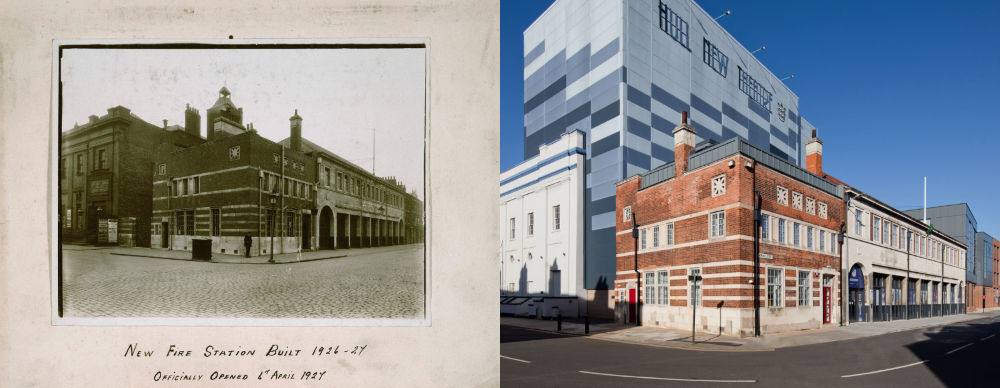
The project also continues a lasting relationship between Ron Dearing UTC and SPACE Architects. The practice previously designed the college’s award-winning main campus, a 600-place University Technical College specialising in Mechatronics and Digital Technology. To be invited back to extend this vision through STEAM Studios is something the team are particularly proud of. When viewed from above, the surrounding streetscape reveals several SPACE projects across this part of Hull, a cluster of buildings that together reflect the city’s ambition and the positive impact of sustained investment in education, culture, and innovation.
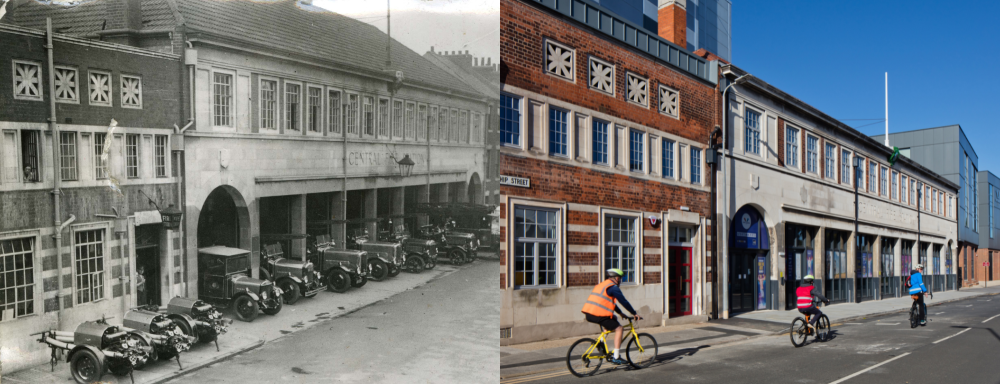
Ultimately, the completed building has exceeded our expectations, providing spaces that will enhance learners’ experiences and provide the required spaces to enable the UTC to expand. Equally important is that SPACE Architects have also brought a heritage asset back to life.”
Sarah Pashley
Principle
Ron Dearing UTC
Credits
- Photography Kristen McCluskie
- Design Team Chris Holmes, Liam Clerkin



